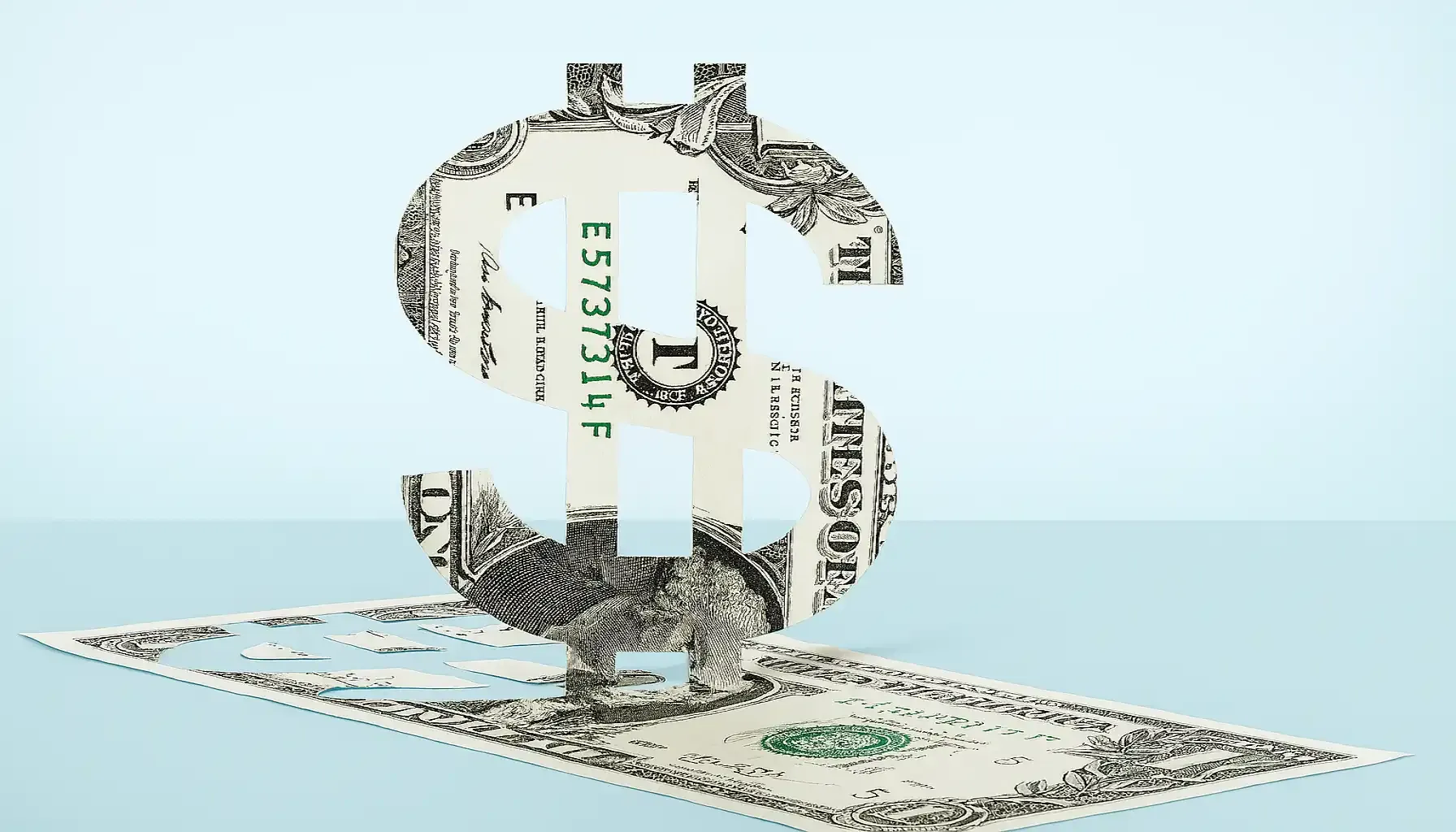Contents:
America is a melting pot that has developed its own culture, be it of artistic, political, or economic origin. Even though it is now considered one of the biggest economies in the world, its starting point was rather blurred and obscure. Initially relying on foreign currencies, this country defined its own standards of coinage and released numerous coins and banknotes that “scream” about their history worldwide.
Half dimes are the unspoken heroes of the American coinage, and their influence was particularly notable and immense. United States half dimes, however diverse and characteristic they may be, still captivate the attention of collectors who strive to obtain the unique and rare instances. But why is the value of half dimes so high, and how to check coin value? Let us see.
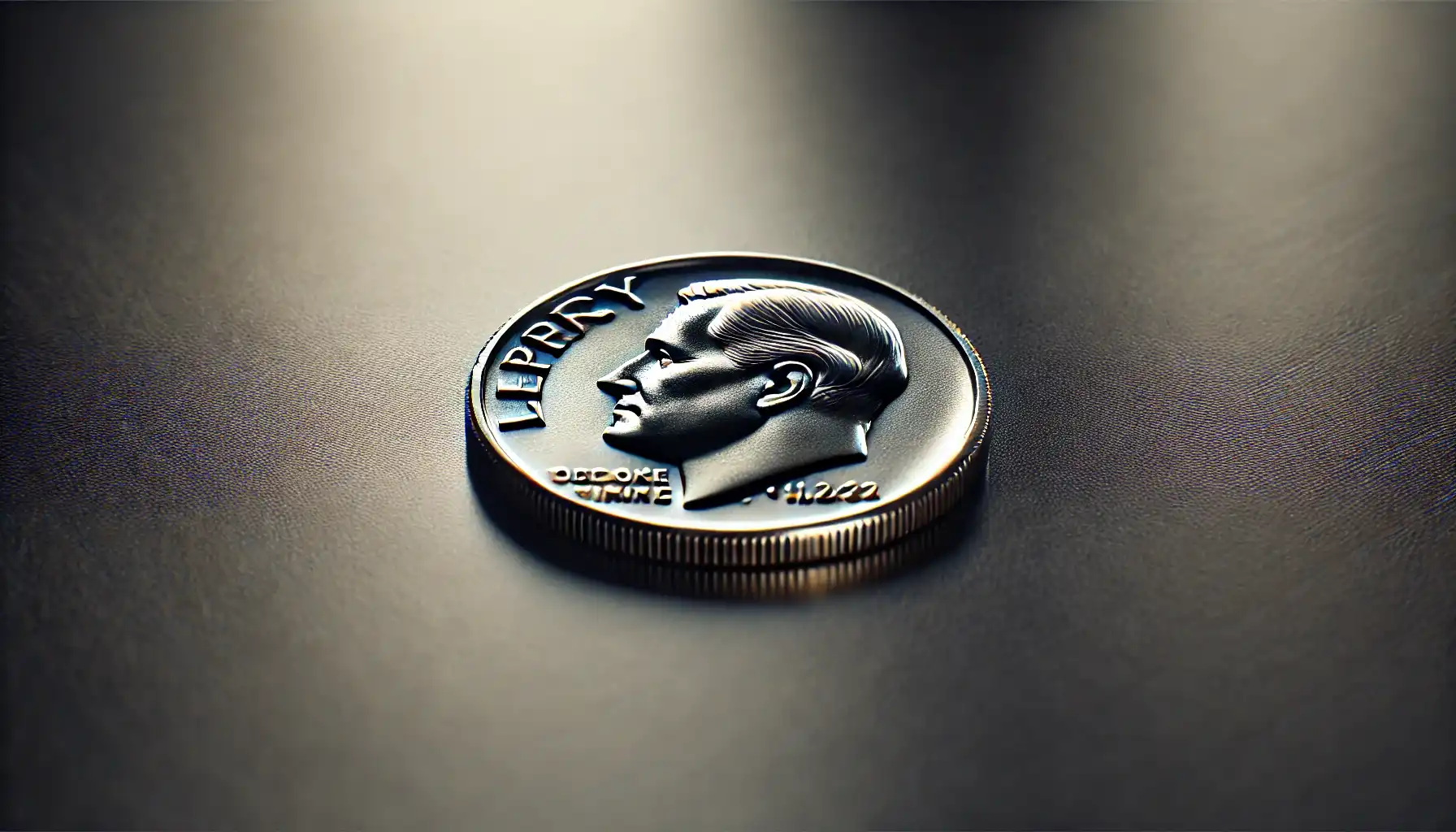
Where Did Half a Dime Coins Come From?
The half dimes bring us back when the US Mint had only emerged. Like any other country involved in the world market, the United States strived to find an appropriate, stable currency that would be able to take the place of foreign coins. Hence, since the Coinage Act of 1792, US half dime coins turned into a standard with unified categorizations behind.
Researchers believe that the first batch of 1,500 instances of these coins was produced in Philadelphia, yet the story is not full enough to grasp separate pieces of this event and evaluate its impact. All in all, these coins quickly became a fine tool for people to establish market relationships and make this circulation meaningful and valuable for all components of the system.
The Main Characteristics of Half Dimes
If you have found a half dime coin somewhere, e.g., at a coin convention, you may wonder why it is called this way and how come it was so popular. The answer is simple: these were seen as miniature versions of conventional dimes.
Composition | 1794–1836: 89.24% silver, 10.76% copper 1837–1873: 90% silver, 10% copper |
Diameter | 15.5 mm |
Weight | 1794–1836: 1.35 grams 1837–1873: 1.24 grams |
Minting Locations | Philadelphia, New Orleans, San Francisco |
Circulation Period | 1794 to 1873 (though authorized in 1792) |
Purpose | Daily transactions |
Design Evolution
During the period of active half-dime circulation, there appeared a few iterations that could bear distinctive designs and indicative meanings.
Coin | Years | Reverse | Obverse |
Flowing Hair Half Dime | 1794-1795 | A small eagle with a wreath. | A profile of young Miss Liberty with long, flowing hair. |
Draped Bust Half Dime (rare!) | 1796-1805 | A small eagle in the early versions further replaced by the heraldic eagle with a wreath. | A profile of a mature Liberty with a draped bust. |
Capped Bust Half Dime | 1829-1837 | An eagle with a shield on the chest with arrows and an olive branch in its claws. | A portrait of the Liberty in a cap with 7 stars to the left of the profile and 6 stars to the right. |
Seated Liberty Half Dime | 1837-1873 | A simple wreath with the denomination at the center of the coin. | Liberty sitting on the rock and holding a shield in the right hand and the cape in the left hand. |
Are Half Dimes Valuable?
How much is a half dime worth? Indeed, due to how far these times are and how scarce production has been (in comparison with what we have nowadays), its values are high and undeniable. Nonetheless, this typically depends on rarity, condition, the year of minting, and other factors that may influence the significance of the coin.
Early instances, such as 1837 half dimes for sale, can be worth thousands of dollars, while others may not be as valuable for collectors and other coin enthusiasts alike. To understand the current value, you need to check it with the help of grading services or auction house support.
Top 10 Most Valuable Half Dimes
The numismatic market dazzles with numerous pieces, even the rarest ones, and acquiring one of them is an investment that will never let you down. Here are the 10 most valuable items of this kind sold on the GreatCollections auction platform:
1792 Flowing Hair Half Disme MS-64
Winning bid: $381,380
The first US half dime believed to have been struck under the supervision of Thomas Jefferson. The most valuable H10C ever auctioned.
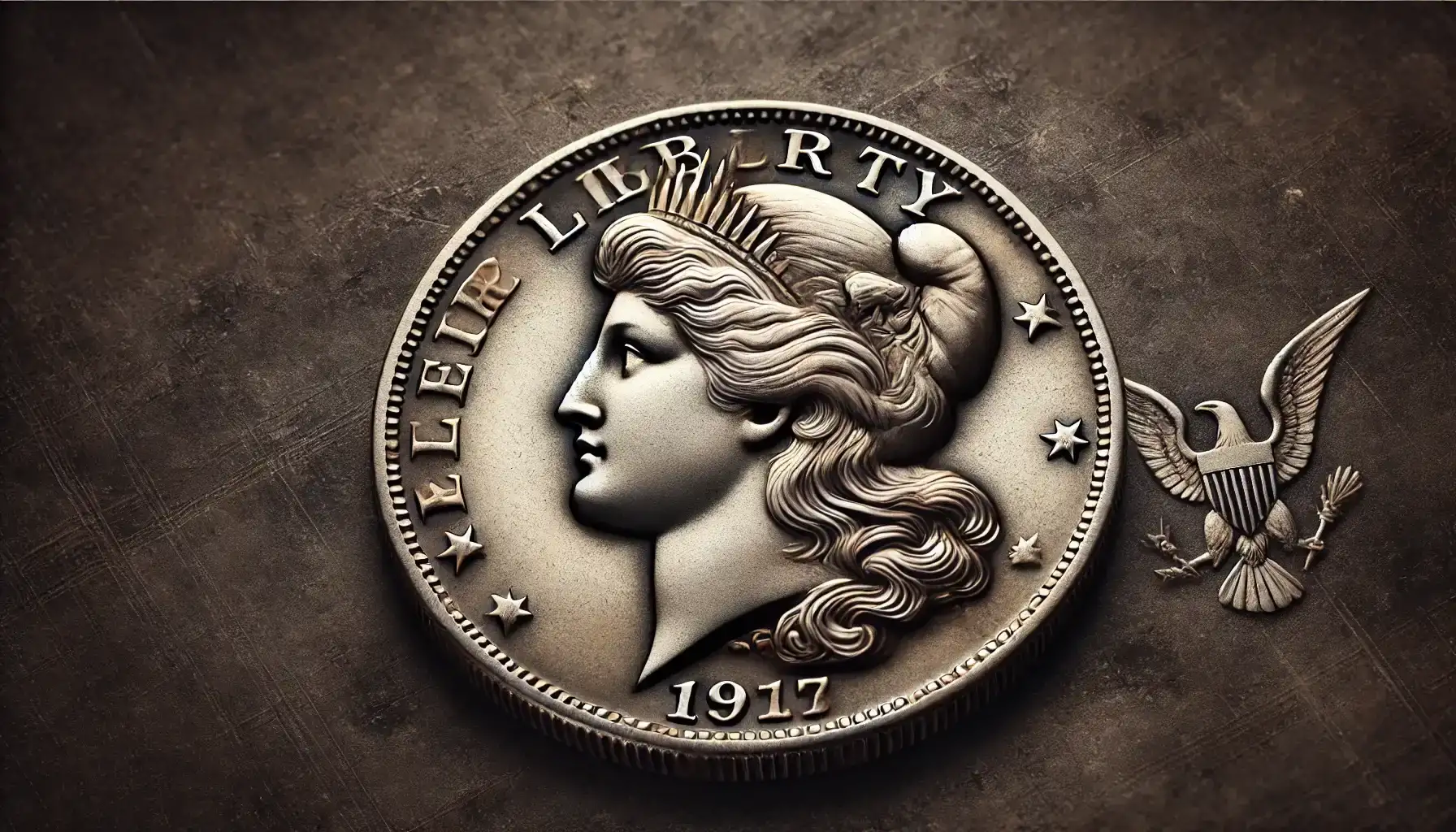
1795 Flowing Hair H10C PCGS MS-67
Winning bid: $178,800
A stunning, exceptionally preserved example of the early Flowing Hair design. The first official instance of the series.
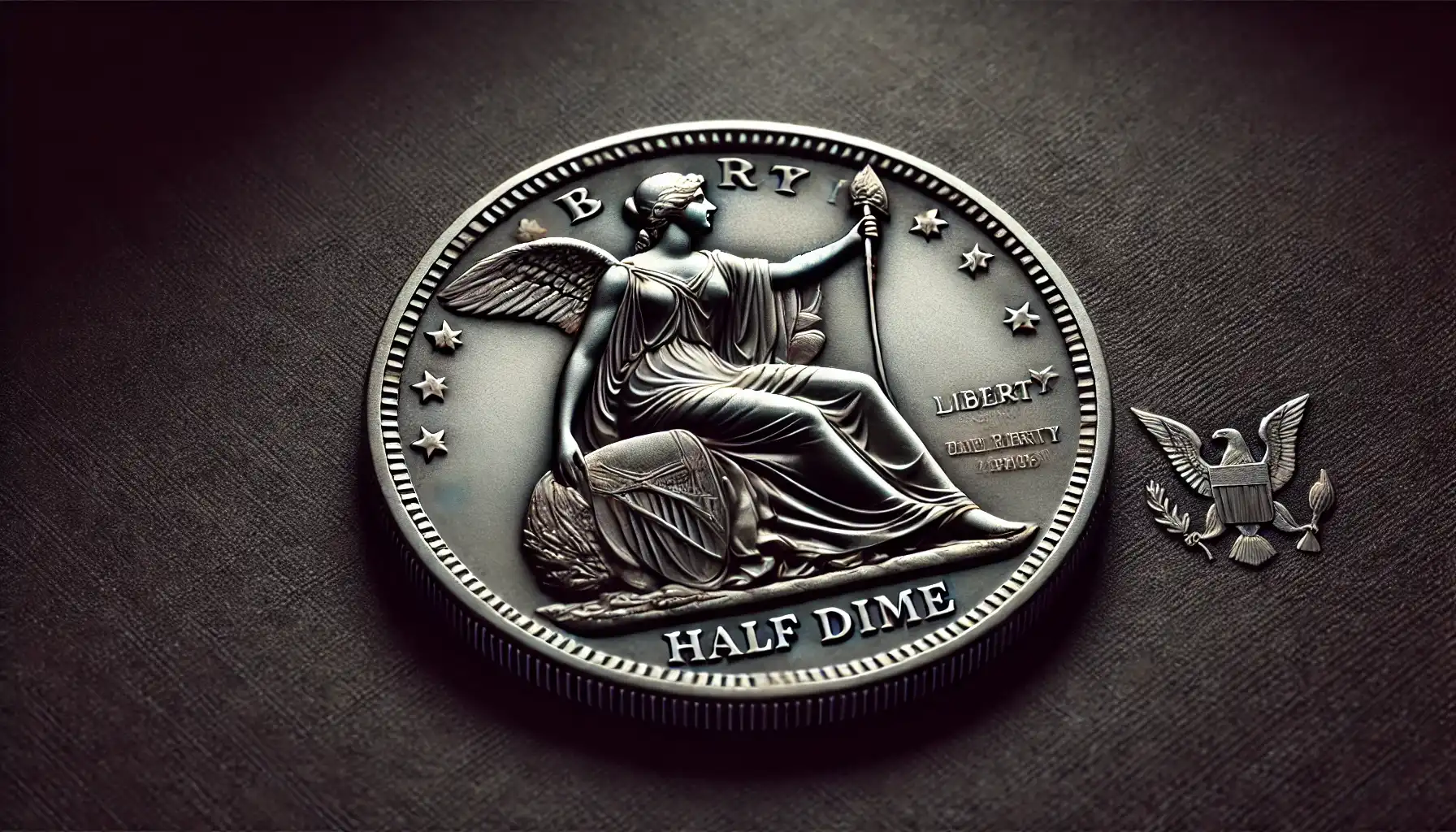
1835 Capped Bust H10C NGC MS-68
Winning bid: $31,000
The brightest piece of the Capped Bust series with sharp details and pristine surfaces.

1800 Draped Bust H10C NGC MS-65
Winning bid: $28,000
A scarce date in the Draped Bust series with strong luster and minimal marks.
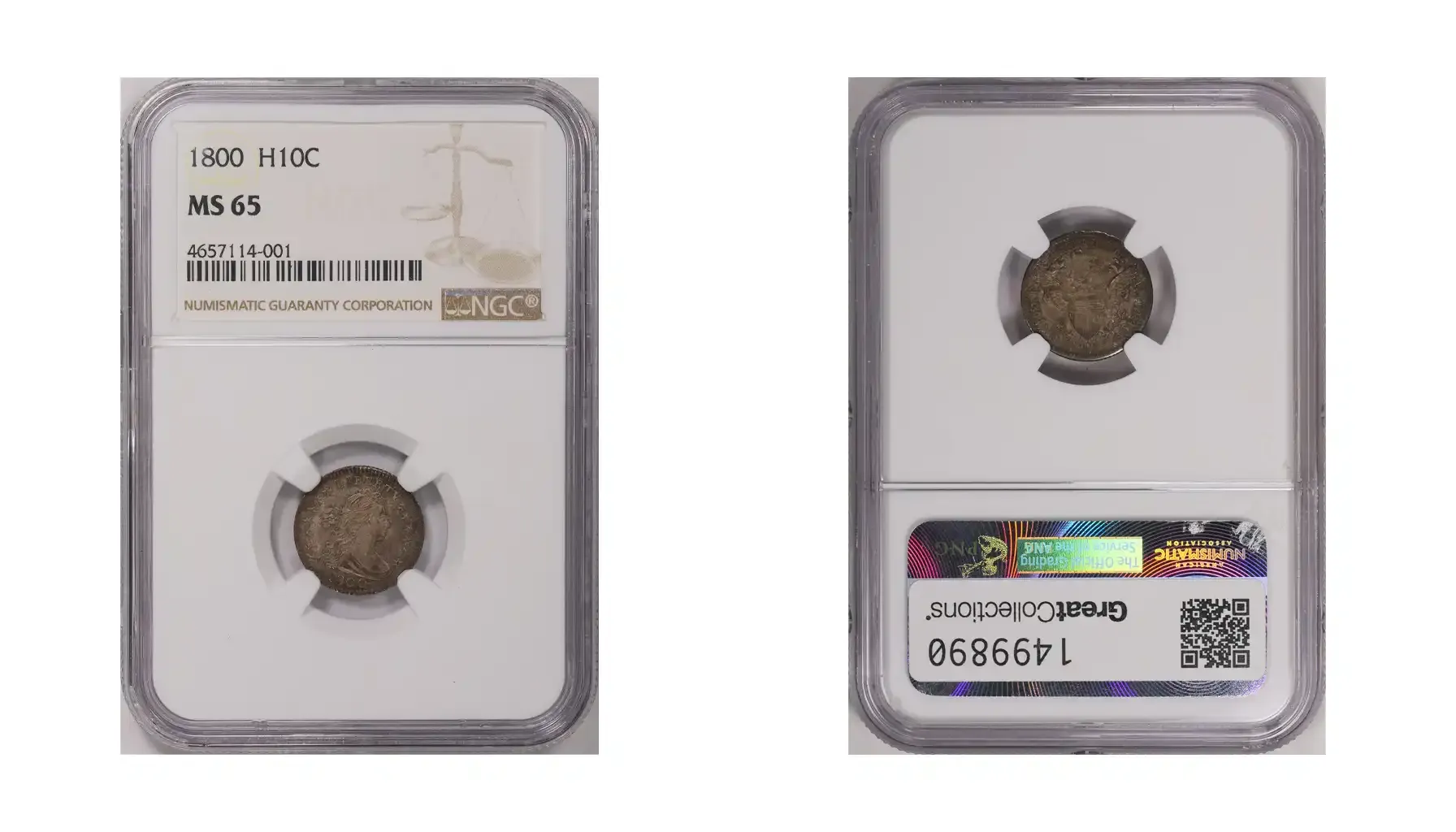
1841-O Seated Liberty H10C NGC MS-68
Winning bid: $27,500
An exceptionally high-grade survivor from an era when few coins were saved in such pristine condition.

1834 Capped Bust H10C NGC MS-68
Winning bid: $21,500
A beautifully struck and nearly flawless example of the Capped Bust design (the finest known instance from 1834).
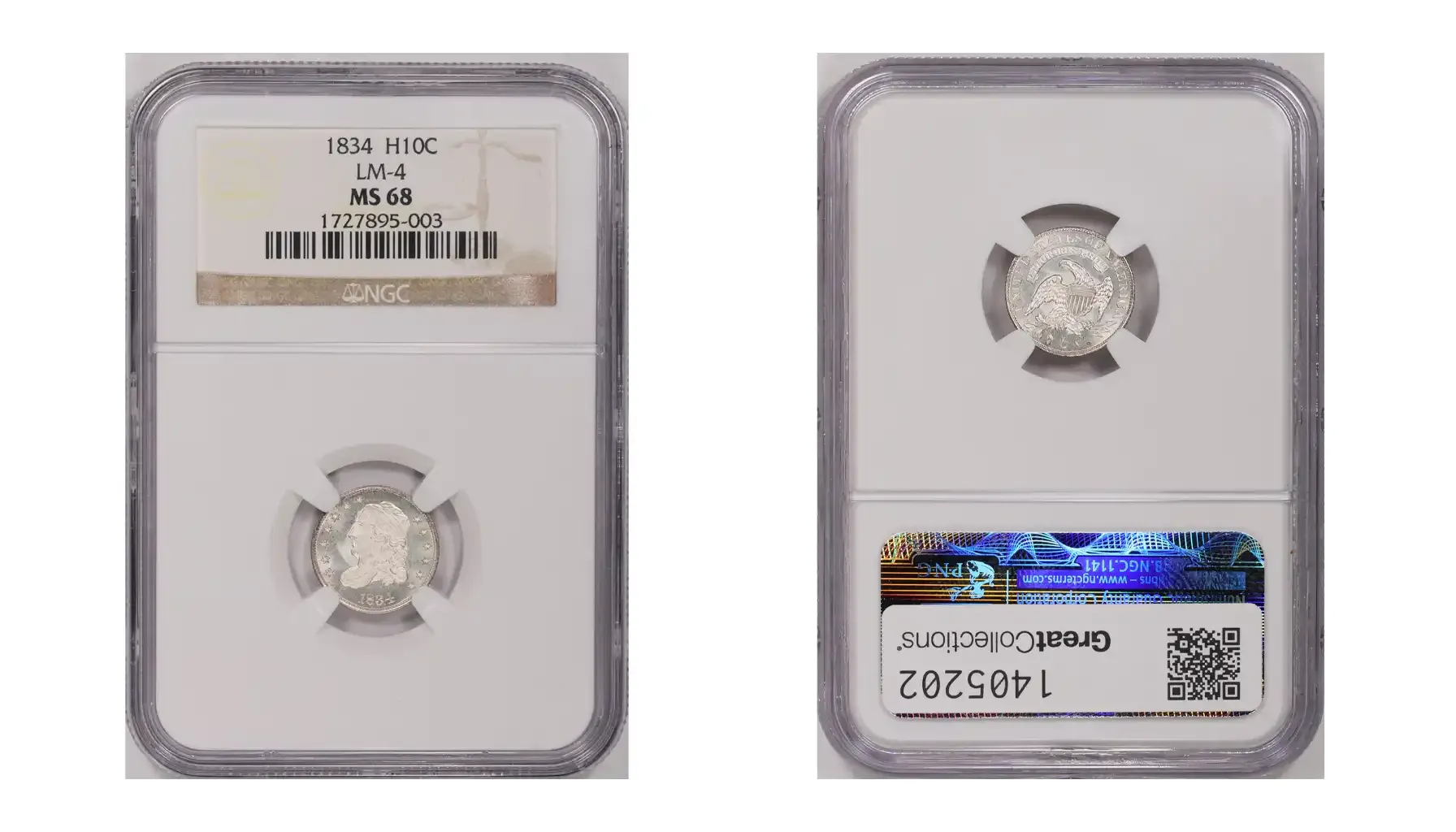
1796/5 Draped Bust H10C PCGS AU-55
Winning bid: $16,000
A rare variety featuring an overdate (1796 struck over a 1795 die).

1837 Seated Liberty H10C No Stars. Large Date NGC MS-67
Winning bid: $15,000
This first-year Seated Liberty issue lacking the later-added stars on the obverse.
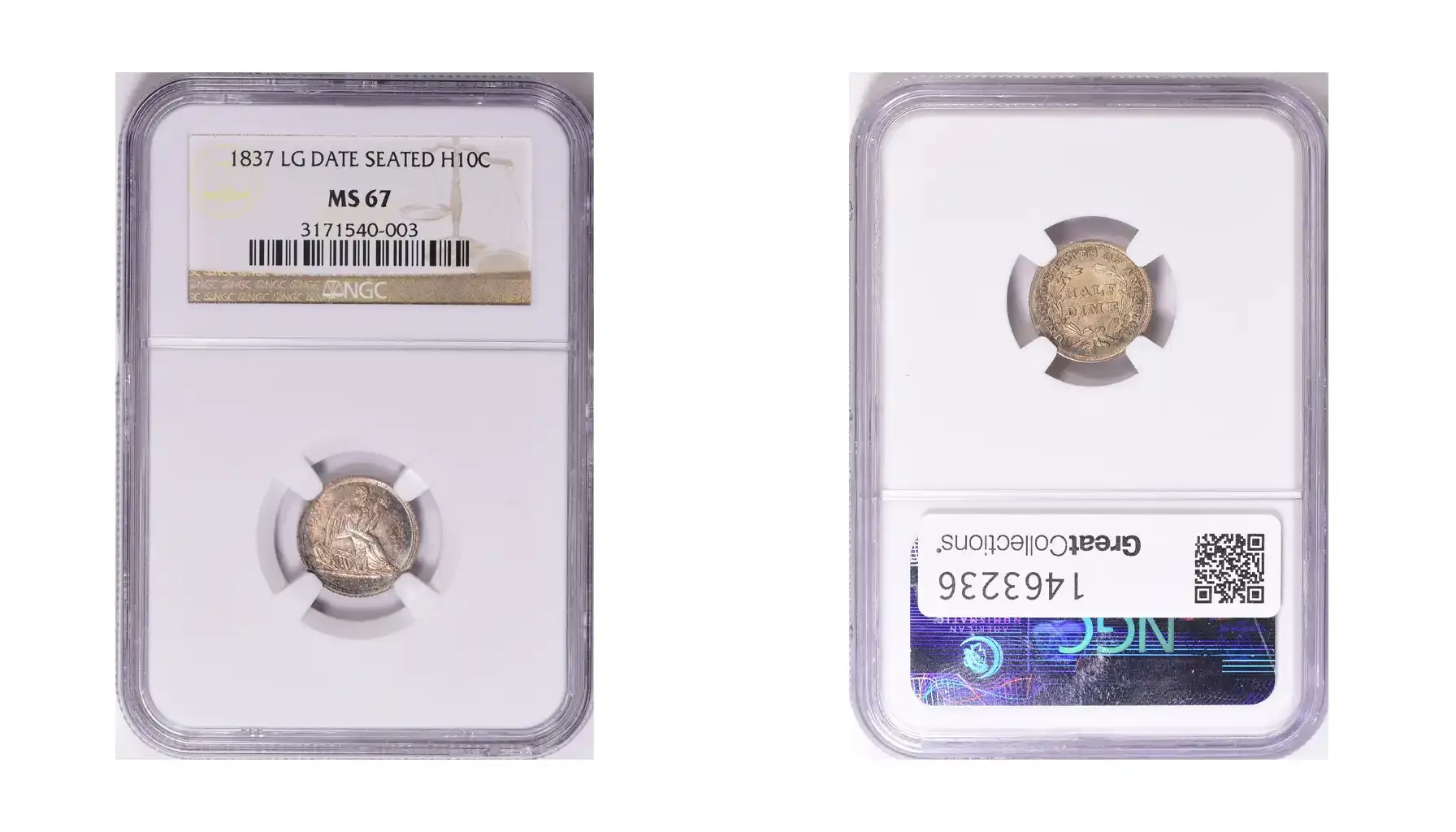
1853 Seated Liberty H10C Arrows PCGS MS-67+
Winning bid: $13,500
The instance with the arrows beside the date indicating a temporary weight reduction in response to rising silver prices.
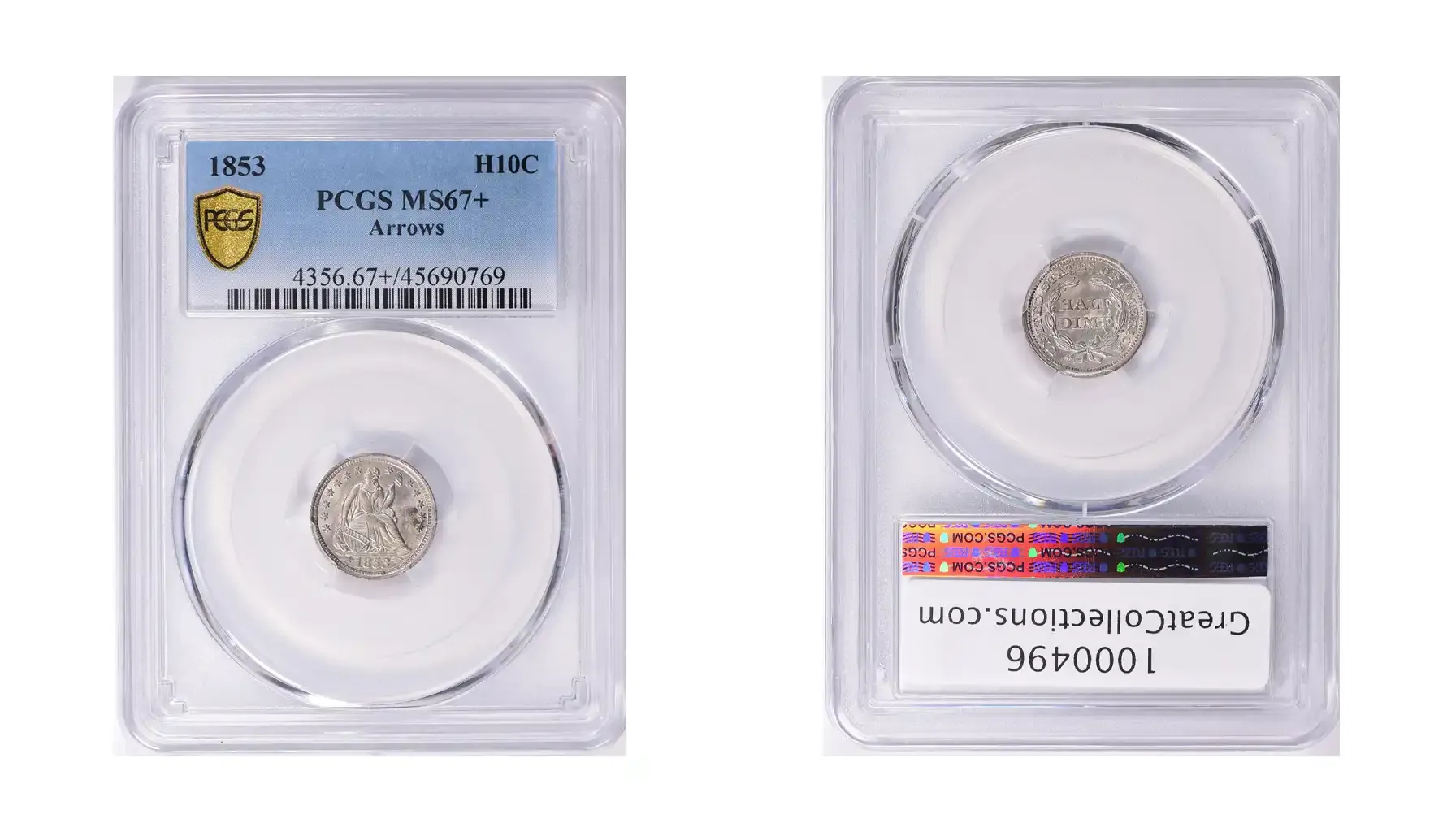
1832 Capped Bust H10C PCGS MS-67+
Winning bid: $13,000
One of the few examples that survived in such excellent condition. A prime example of the high standards set by collectors for early American coinage.
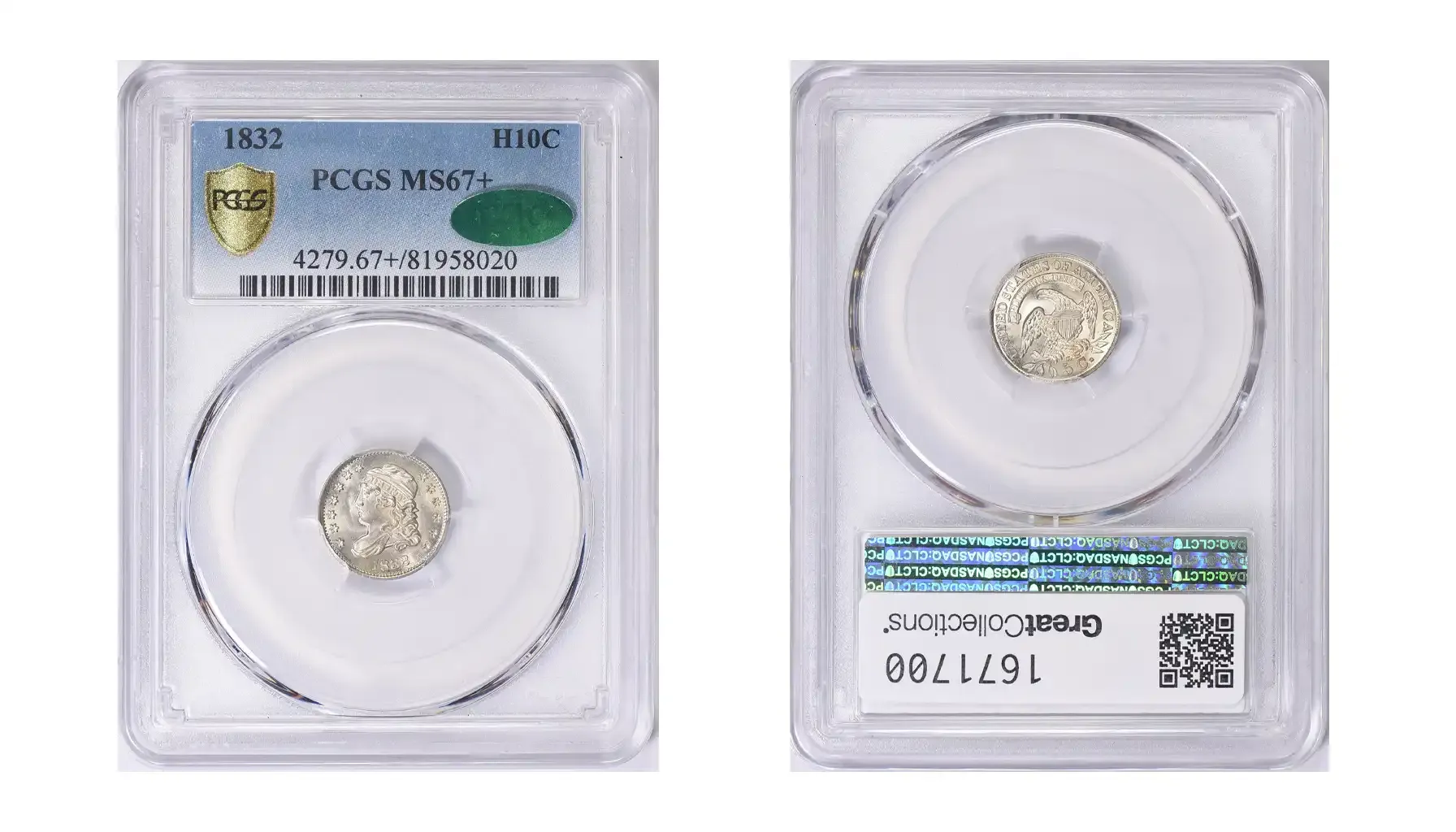
Celebrate the Legacy, Cherish the Past
No matter how small coins may be, their place in the collection and the American monetary history in general is immense. The legacy left by these coins clearly demonstrates the true nature of the nation, its aspirations, and the delicate union of artistry and economic development. This manifestation is a longed-for objective to be present in the private (or public) collections, whether extensive or small, i.e., emerging.
Collecting is always a complicated task, for one requires a witty mind, attention to detail, profound numismatic knowledge, and even the gut feeling to compile a fine collection of valuable items precious to heart and soul. To make the experience a bit less stressful and tangled, one is free to employ digital tools and comprehensive instruments such as Coin ID Scanner so as to identify and evaluate coins on the spot.

Have you ever wondered how easy it may be to grasp relevant information in an instant with appropriate forces by your side? Coin ID Scanner is a young yet promising application that allows one to identify coins by photo, and collect essential information regarding their history, origin, condition, minting details, composition, estimated value, and more. For numismatists of all sorts, this could be a great opportunity to take the best out of collecting and always stay equipped with relevant data only.
Half dimes are small, but their value does not correspond with this physical characteristic but cultural significance and social appreciation. When having been minted, these could show the switch to another level of American economics that required authenticity, autonomy, and a fresh approach, and half dimes served their function appropriately.

